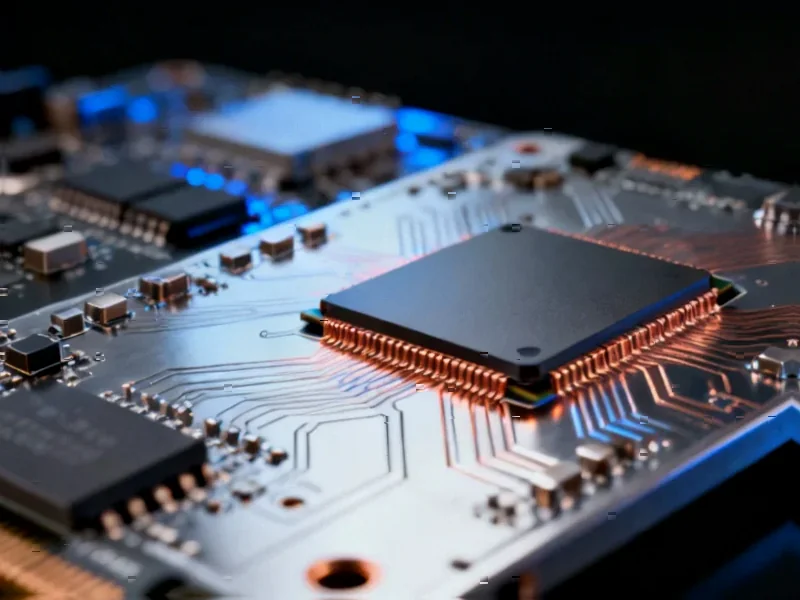When Apple unveiled the M5 MacBook Pro with nearly identical external design to its predecessor, many assumed this would be another incremental chip refresh. They were wrong. The real story isn’t just about CPU performance—it’s about a storage revolution that’s quietly redefining what professional laptops can accomplish. According to comprehensive testing from Max Tech, the M5 MacBook Pro’s SSD performance isn’t just better than the M4 model—it’s in a completely different league, delivering up to 211 percent faster read and write speeds that actually challenge high-end desktop storage solutions.
Table of Contents
- The Numbers Don’t Lie: A Storage Quantum Leap
- Engineering Mystery: What’s Driving This Performance Explosion?
- Market Implications: Apple’s Strategic Storage Play
- Thermal Management: The Unsung Hero
- Value Proposition: Performance Versus Price
- The Bigger Picture: Storage as Competitive Advantage
- Looking Ahead: The Storage Revolution Continues
- Related Articles You May Find Interesting
The Numbers Don’t Lie: A Storage Quantum Leap
What makes this performance jump particularly remarkable is that both machines share identical physical configurations—same NAND flash memory chip count, same internal layout, even the same cooling system. Yet the M5 MacBook Pro is achieving sequential read and write speeds exceeding 6,000MB/s, effectively crossing into territory previously dominated by premium PCIe NVMe Gen 4 desktop SSDs. This isn’t just incremental improvement; it’s the kind of generational leap we haven’t seen since Apple transitioned from mechanical hard drives to solid-state storage over a decade ago.
The implications here are substantial. For creative professionals working with massive 8K video files, large RAW photo libraries, or complex 3D modeling projects, these SSD speeds effectively eliminate storage bottlenecks that have plagued mobile workstations for years. We’re talking about application launch times measured in seconds rather than minutes, and file transfers that complete before you’ve even had time to check your email.
Engineering Mystery: What’s Driving This Performance Explosion?
Here’s where things get particularly interesting from a technical perspective. Given the identical physical hardware layout between M4 and M5 models, this performance explosion suggests Apple has made significant under-the-hood improvements to the SSD controller architecture. While the company hasn’t released detailed specifications, the evidence points toward either a completely redesigned storage controller integrated into the M5 chipset or substantial firmware optimizations that dramatically improve NAND flash management.
What’s especially perplexing—and impressive—is that Apple achieved these gains without increasing power consumption or thermal output. In fact, the testing shows the M5 runs cooler than its M4 predecessor despite the massive performance uplift. This suggests remarkable engineering efficiency that other laptop manufacturers will struggle to match.
Market Implications: Apple’s Strategic Storage Play
This storage performance leap isn’t happening in a vacuum. It comes at a time when competing workstation laptops from Dell, HP, and Lenovo have largely stagnated in storage innovation, focusing instead on GPU and CPU upgrades. Apple appears to be making a calculated bet that storage performance—particularly consistent, sustained performance—matters more to professionals than marginal gains in processing power.
They’re probably right. In real-world usage, most creative professionals hit storage bottlenecks long before they max out CPU or GPU capabilities. By addressing this fundamental constraint, Apple is positioning the M5 MacBook Pro as the go-to solution for photographers, video editors, and developers who need instant access to massive project files.
The timing is also strategic. With AI workloads becoming increasingly common in creative applications, fast storage becomes critical for loading large machine learning models and datasets. Apple seems to be anticipating the storage demands of next-generation AI-enhanced workflows that competitors haven’t yet addressed.
Thermal Management: The Unsung Hero
While the SSD performance grabs headlines, the thermal story deserves equal attention. Reaching 99 degrees Celsius under intensive workloads might sound alarming, but it’s actually an improvement over previous generations. More importantly, it demonstrates that Apple’s cooling system—while visually identical—is effectively managing significantly higher performance loads without requiring bulkier heatsinks or louder fans.
This thermal efficiency is crucial for maintaining those blistering SSD speeds during sustained workloads. Many laptops can achieve peak performance briefly before thermal throttling kicks in, but early testing suggests the M5 maintains its storage performance advantage consistently, which matters far more for professional use cases.
Value Proposition: Performance Versus Price
At $1,583 for the base M5 model versus $1,349 for the similarly configured M4 version, buyers face a genuine dilemma. Is that 211 percent storage performance worth the $234 premium? For professionals whose workflow involves constant file access and application launching, absolutely. For general users, probably not.
What’s particularly clever about Apple’s pricing strategy is that they’ve created clear performance differentiation without dramatically altering the product lineup. Customers who need maximum storage performance now have a compelling reason to choose the M5, while budget-conscious buyers can still get excellent performance from the M4 model.
The Bigger Picture: Storage as Competitive Advantage
Apple’s focus on storage performance represents a strategic shift that could reshape the entire laptop market. While competitors chase CPU and GPU benchmarks, Apple is optimizing the entire system stack—including storage—to deliver real-world performance improvements that users actually notice.
This approach plays to Apple’s strengths in vertical integration. By controlling both the hardware and software stack, they can optimize storage performance in ways that Windows laptop manufacturers relying on third-party SSD suppliers simply can’t match. It’s the same strategy that made the original MacBook Air so revolutionary—focusing on user experience rather than spec sheet comparisons.
Looking Ahead: The Storage Revolution Continues
The M5’s storage performance isn’t just about today’s workflows—it’s laying groundwork for tomorrow’s applications. As file sizes continue to grow with higher resolution content and more complex projects, storage speed becomes the critical path for productivity. Apple appears to be betting that by the time competitors catch up to today’s storage performance, they’ll already be several generations ahead.
What’s particularly exciting is what this means for future MacBook Pro iterations. If Apple can deliver this level of storage performance improvement with each generation, we could see laptop storage speeds approaching 10,000MB/s within the next two years—performance that would have been unimaginable in a mobile device just a few years ago.
The M5 MacBook Pro’s storage revolution demonstrates that sometimes the most meaningful innovations aren’t the most visible. While the exterior remains familiar, the internal performance transformation is anything but incremental. For professionals whose time literally is money, those faster application launches and quicker file accesses could represent one of the most valuable upgrades Apple has delivered in years.



